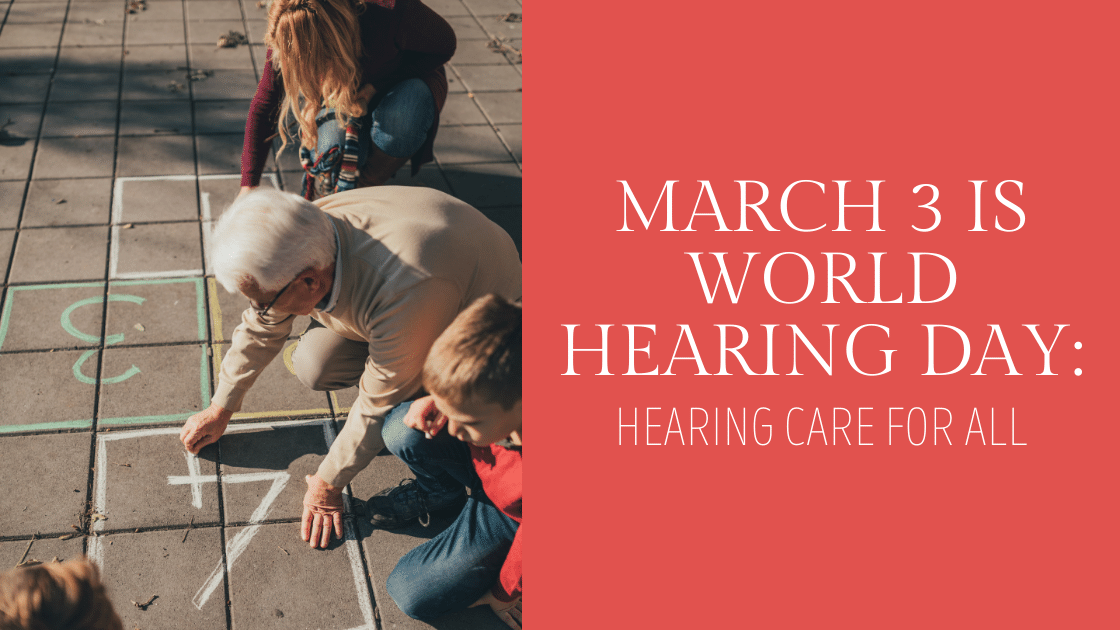
- How Spending Time Outdoors Enhances Hearing Health - July 16, 2024
- Exploring the Impact of Sports on Hearing Health - July 3, 2024
- The Impact of Diet on Hearing Loss - June 28, 2024
The World Health Organization is launching the World Report on Hearing on March 3, this year’s World Hearing Day. The message is clear for all: We need to do a better job taking care of our hearing! The WTO suggests interventions at the policy level aimed at making hearing healthcare a more integrated aspect of national health plans. A few cost effective measures can prevent a host of more costly consequences, suggesting that better hearing healthcare at the policy level can contribute to a better standard of living as well as an increased GDP.
We as individuals also need to understand hearing healthcare as an integral aspect of overall health and well-being. Indeed, in recent decades, study after study confirms that untreated hearing loss can have a host of negative effects on health and lifestyle, and treating hearing loss with hearing aids is the best way to promote a healthier, happier life.
But the best medicine is prevention, and both local and global measures of prevention are found to be lacking currently. Let’s celebrate World Hearing Day by taking a look at some of the ways we can keep our hearing health in good shape for the long haul!
Regular Hearing Tests
Most of us don’t realize we have hearing loss until it becomes an issue in our day to day lives. The Better Hearing Institute, a non-profit, recommends getting a hearing test once a decade until age 50, and once every three years thereafter. (Those in higher-risk professions or with a medical history indicating a higher risk for hearing loss should be tested more often.)
Regular hearing tests mean that we can catch hearing loss early, before it is even noticeable. This way, we can think about the ways we can modify our behaviors to prevent further hearing loss. If you’re due or overdue for a hearing test, celebrate World Hearing Day by making an appointment now!
Earbuds
When Sony released its Walkman in the early 1980s, hearing healthcare experts cautioned that listening at high volumes in headphones or earbuds could have disastrous results. Indeed, statistics indicated a rise in hearing loss in the years that followed.
Today’s personal listening devices are even louder than the original Walkman. It should be stressed that it is never safe to listen at maximum volume, or anywhere near it. While it is difficult to measure the exact noise levels that may be present for each individual (since each individual ear canal is different, causing different settings to have significantly different effects from person to person), the best advice is to listen only at a level that is just loud enough that you can comfortably hear the audio content. Remember that your personal listening device’s volume is adding to the noise that is already present in the environment, so take special caution when listening on transportation, and consider investing in noise-canceling headphones.
“Too Loud” Is Quieter Than You Might Think
While we might think that sound levels need to be painful to cause hearing loss, the truth is not so convenient. In fact, only 85 dBA (about the noise level of a lawnmower) will cause permanent hearing loss after 8 hours of continuous exposure. For every additional 3 dBA of sound, the safe time of exposure is cut in half. By the time sound reaches 100 dBA (about the level of a gymnasium at a high school dance), hearing loss occurs in just a few moments.
If you’re not sure of the noise levels to which you’re being exposed on a regular basis, you can download a smartphone app that will measure the dBA of any environment you find yourself in. Usually called an “SPL meter” (sound pressure level meter), it should give you a reading of the maximum noise levels and the average over time. If the average reaches or exceeds 85 dBA, it’s time to protect your ears while you’re there.
Earplugs
A set of disposable earplugs costs about $1.00. You can carry these with you and use them when you encounter unsafe noise levels, throwing them away when you’re done. If you expect to encounter unsafe sounds more regularly, you might wish to invest in a set of reusable earplugs. Ranging from $15–30, these sound more natural than disposables and can effectively attenuate about 15 dBA of sound.
Professionals and enthusiasts may wish to invest in custom-molded earplugs. An audiologist will take a mold of your ear canal and produce a set of silicone earplugs that entirely seal your ear canal to outside sound. An attenuator implanted in the silicone will reduce sound by a specified amount, and the frequency range will remain totally flat, meaning that the sound you hear is as natural as if you were not wearing earplugs, only quieter.
Get a Hearing Test!
If you’re due or overdue for a hearing test, make an appointment today and start keeping track of your hearing health! There’s no better time to start than World Hearing Day! If you do have significant hearing loss, hearing aids are the best way to keep yourself feeling strong and independent throughout your life.
